
Chinese New Year Festival
The Spring Festival or the Chinese New Year is the most important festival for the Chinese people and the celebration takes a vast shape just the celebration of Christmas, in the west. All people staying away from home to be with their respective family and enhance the mood festivity further.Thus this time of the year becomes the busiest time for transportation systems as half of the population arranges for their return to their home town to celebrate the Spring Festival.Thus airports, railway stations and long-distance bus stations become crowded with home returnees.
The Spring Festival falls on the 1st day of the 1st lunar month, which often falls one month later than the Gregorian based calendar. As per history, the celebration of the Spring Festival originated in the Shang Dynasty (c. 1600 BC-c. 1100 BC) which often involvedmany sacrifices which the people made to the gods and ancestors at the end of an old year and the beginning of a new one. Strictly speaking, the Spring Festival starts every year in the early days of the 12th lunar month and lasts till the mid-1st lunar month of the next year. And the most important days are Spring Festival Eve and the first three days. The Chinese government now stipulates people to have seven days off for the Chinese Lunar New Year.
However many customs are followed in order to observe this particular festival. But the observance of this festival varies accordingly. The rituals which are followed are as follows. On the 8th day of the 12th lunar month, many families make laba porridge, which is a delicious kind of porridge made ofsome glutinous kind of rice, seeds of Job's tears, millets, jujube berries, lotus seeds, beans, longan and gingko.
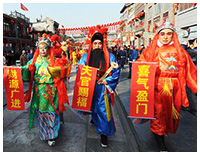 The 23rd day of the 12th lunar month is known as the Preliminary Eve. During this time of the year, people offer sacrifice to the kitchen god. But the recent years have seen a change, for people instead making offers to the deities; make delicious food in order to satiate one’s own appetite.
The 23rd day of the 12th lunar month is known as the Preliminary Eve. During this time of the year, people offer sacrifice to the kitchen god. But the recent years have seen a change, for people instead making offers to the deities; make delicious food in order to satiate one’s own appetite.
After the Preliminary Eve is been observed, people begin preparing for the coming New Year. This is also known as the "Seeing the New Year in". During this time of the year people all over get busy purchasingitems of necessities for the New Year, thus on the other hands, owners of shops get busy as well for every one turn up shopping. Materials which are being shopped, not only include edible oil, flour, rice, chicken, fish, duck and meat, but also include fruit, candies and kinds of nuts. However these materials are also complemented with various decorations, new clothes and shoes for the children as well as gifts for the elderly, friends and relatives.
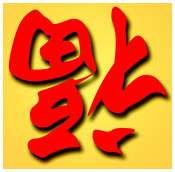 Apart from buying and purchasing of necessities, people also take a good care about their houses, so as to welcome the oncoming New Year with warmth and love. Thus people take good care to completely clean the indoors and outdoors of their homes as well as their clothes, bedclothes and all their utensils so that it can portray a cleanliness in their approaching while welcoming the New Year. Thus household in way shows a kind of uniformity while decorating their respective houses, for their door panels will be decorated with Spring Festival couplets, highlighting some famous Chinese calligraphy with black characters on red paper. However the content varies as per the house owners' wishes, for one might wish for a bright future ahead, while other may hope for a good luck for the New Year. Also, pictures of the deities are hanged on front of doors so as to ward off evil spirits and welcome peace and wealth in abundance. A common feature amidst all decorations is the Chinese character "fu" which means happiness or blessing, is hanged everywhere in form of wall-hangings or other form of decorations.Further the character put on paper can be pasted upside down as well, for in Chinese the "reversed fu" is homophonic with "fu comes", both being pronounced as "fudaole". Moreover the Chinese find it auspicious to hang two big red lanterns on both the sides of the front door, for it has been connoted with some auspicious religious meanings.
Apart from buying and purchasing of necessities, people also take a good care about their houses, so as to welcome the oncoming New Year with warmth and love. Thus people take good care to completely clean the indoors and outdoors of their homes as well as their clothes, bedclothes and all their utensils so that it can portray a cleanliness in their approaching while welcoming the New Year. Thus household in way shows a kind of uniformity while decorating their respective houses, for their door panels will be decorated with Spring Festival couplets, highlighting some famous Chinese calligraphy with black characters on red paper. However the content varies as per the house owners' wishes, for one might wish for a bright future ahead, while other may hope for a good luck for the New Year. Also, pictures of the deities are hanged on front of doors so as to ward off evil spirits and welcome peace and wealth in abundance. A common feature amidst all decorations is the Chinese character "fu" which means happiness or blessing, is hanged everywhere in form of wall-hangings or other form of decorations.Further the character put on paper can be pasted upside down as well, for in Chinese the "reversed fu" is homophonic with "fu comes", both being pronounced as "fudaole". Moreover the Chinese find it auspicious to hang two big red lanterns on both the sides of the front door, for it has been connoted with some auspicious religious meanings.
Festival without good food sounds incomplete. Thus the Chinese people make it a point to make good care about the food as it serves as the main aspect of the celebration. Thus all the members of the family do gather together so that they can dine together and enhance the spirit of festivity. The meals which are served are generally of luxurious kind than the usual. Dishes that are being served for the occasion generally include special dishes of chicken, fish and bean curd and so on. Thus after completing with the dinner, the members generally sit down to watching T.V and sharing long conversations. However a common trend amongst the Chinese Community is to watch the Spring Festival party which is broadcasted on China Central Television Station (CCTV), thus form an essential form of entertainment for the Chinese both at home and abroad. Thus member of every household make it a point to stay awake the whole night.
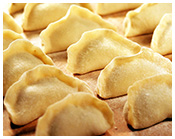 Thus with the New Year dawn the life of the Chinese people do take a new and fresh turn. They duly make it a point to start the year with certain freshness and purity. Everybody deck themselves up with new clothes and attire. And after dressing up, they make it a point to extend their greetings to their parents and in return seek their blessings. Moreover it has almost become customary for each child to receive money as a New Year gift, wrapped up in red paper.
Thus with the New Year dawn the life of the Chinese people do take a new and fresh turn. They duly make it a point to start the year with certain freshness and purity. Everybody deck themselves up with new clothes and attire. And after dressing up, they make it a point to extend their greetings to their parents and in return seek their blessings. Moreover it has almost become customary for each child to receive money as a New Year gift, wrapped up in red paper.
As per the people in northern China, they will eat Jiaozi, or dumplings, for breakfast, as they think "Jiaozi" in sound means "bidding farewell to the old and ushering in the new". Moreover, the shape of the dumpling is like gold ingot from ancient China. So people eat them and wish for money and treasure.
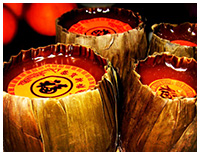 However the Southern Chinese does not lag much behind. They eat NianGao (New Year cake made of glutinous rice flour) for this occasion, because as a homophone, "NianGao" means "higher and higher, one year after another." The first five days after the Spring Festival are considered good time for relatives, friends, and classmates as well as colleagues to exchange greetings, gifts and chat leisurely.
However the Southern Chinese does not lag much behind. They eat NianGao (New Year cake made of glutinous rice flour) for this occasion, because as a homophone, "NianGao" means "higher and higher, one year after another." The first five days after the Spring Festival are considered good time for relatives, friends, and classmates as well as colleagues to exchange greetings, gifts and chat leisurely.
Apart from savouring over delicious dishes, burning fireworks is also considered to be a typical custom for the Spring Festival. It was a common thought among the people to make spluttering sound so that it could ward off every evil spirits. However, such an activity was completely forbidden in big cities once the government took security, noise and pollution factors into strict consideration. Thus as aneffective replacement, some buy tapes with firecracker sounds to listen to, some break little balloons to get the sound too, while others buy firecracker handicrafts to hang it in their living room. Apart from celebrating with firecracker sounds and savouring on food, a series of activities also take place such as lion dancing, dragon lantern dancing, lantern festivals and temple fairs and of the likes. Thus this auspicious Spring Festival finally comes to an end with the Lantern Festival, thus lighting up new hopes and aspirations.
The Spring Festival falls on the 1st day of the 1st lunar month, which often falls one month later than the Gregorian based calendar. As per history, the celebration of the Spring Festival originated in the Shang Dynasty (c. 1600 BC-c. 1100 BC) which often involvedmany sacrifices which the people made to the gods and ancestors at the end of an old year and the beginning of a new one. Strictly speaking, the Spring Festival starts every year in the early days of the 12th lunar month and lasts till the mid-1st lunar month of the next year. And the most important days are Spring Festival Eve and the first three days. The Chinese government now stipulates people to have seven days off for the Chinese Lunar New Year.
However many customs are followed in order to observe this particular festival. But the observance of this festival varies accordingly. The rituals which are followed are as follows. On the 8th day of the 12th lunar month, many families make laba porridge, which is a delicious kind of porridge made ofsome glutinous kind of rice, seeds of Job's tears, millets, jujube berries, lotus seeds, beans, longan and gingko.
 The 23rd day of the 12th lunar month is known as the Preliminary Eve. During this time of the year, people offer sacrifice to the kitchen god. But the recent years have seen a change, for people instead making offers to the deities; make delicious food in order to satiate one’s own appetite.
The 23rd day of the 12th lunar month is known as the Preliminary Eve. During this time of the year, people offer sacrifice to the kitchen god. But the recent years have seen a change, for people instead making offers to the deities; make delicious food in order to satiate one’s own appetite.After the Preliminary Eve is been observed, people begin preparing for the coming New Year. This is also known as the "Seeing the New Year in". During this time of the year people all over get busy purchasingitems of necessities for the New Year, thus on the other hands, owners of shops get busy as well for every one turn up shopping. Materials which are being shopped, not only include edible oil, flour, rice, chicken, fish, duck and meat, but also include fruit, candies and kinds of nuts. However these materials are also complemented with various decorations, new clothes and shoes for the children as well as gifts for the elderly, friends and relatives.
 Apart from buying and purchasing of necessities, people also take a good care about their houses, so as to welcome the oncoming New Year with warmth and love. Thus people take good care to completely clean the indoors and outdoors of their homes as well as their clothes, bedclothes and all their utensils so that it can portray a cleanliness in their approaching while welcoming the New Year. Thus household in way shows a kind of uniformity while decorating their respective houses, for their door panels will be decorated with Spring Festival couplets, highlighting some famous Chinese calligraphy with black characters on red paper. However the content varies as per the house owners' wishes, for one might wish for a bright future ahead, while other may hope for a good luck for the New Year. Also, pictures of the deities are hanged on front of doors so as to ward off evil spirits and welcome peace and wealth in abundance. A common feature amidst all decorations is the Chinese character "fu" which means happiness or blessing, is hanged everywhere in form of wall-hangings or other form of decorations.Further the character put on paper can be pasted upside down as well, for in Chinese the "reversed fu" is homophonic with "fu comes", both being pronounced as "fudaole". Moreover the Chinese find it auspicious to hang two big red lanterns on both the sides of the front door, for it has been connoted with some auspicious religious meanings.
Apart from buying and purchasing of necessities, people also take a good care about their houses, so as to welcome the oncoming New Year with warmth and love. Thus people take good care to completely clean the indoors and outdoors of their homes as well as their clothes, bedclothes and all their utensils so that it can portray a cleanliness in their approaching while welcoming the New Year. Thus household in way shows a kind of uniformity while decorating their respective houses, for their door panels will be decorated with Spring Festival couplets, highlighting some famous Chinese calligraphy with black characters on red paper. However the content varies as per the house owners' wishes, for one might wish for a bright future ahead, while other may hope for a good luck for the New Year. Also, pictures of the deities are hanged on front of doors so as to ward off evil spirits and welcome peace and wealth in abundance. A common feature amidst all decorations is the Chinese character "fu" which means happiness or blessing, is hanged everywhere in form of wall-hangings or other form of decorations.Further the character put on paper can be pasted upside down as well, for in Chinese the "reversed fu" is homophonic with "fu comes", both being pronounced as "fudaole". Moreover the Chinese find it auspicious to hang two big red lanterns on both the sides of the front door, for it has been connoted with some auspicious religious meanings.
Festival without good food sounds incomplete. Thus the Chinese people make it a point to make good care about the food as it serves as the main aspect of the celebration. Thus all the members of the family do gather together so that they can dine together and enhance the spirit of festivity. The meals which are served are generally of luxurious kind than the usual. Dishes that are being served for the occasion generally include special dishes of chicken, fish and bean curd and so on. Thus after completing with the dinner, the members generally sit down to watching T.V and sharing long conversations. However a common trend amongst the Chinese Community is to watch the Spring Festival party which is broadcasted on China Central Television Station (CCTV), thus form an essential form of entertainment for the Chinese both at home and abroad. Thus member of every household make it a point to stay awake the whole night.
 Thus with the New Year dawn the life of the Chinese people do take a new and fresh turn. They duly make it a point to start the year with certain freshness and purity. Everybody deck themselves up with new clothes and attire. And after dressing up, they make it a point to extend their greetings to their parents and in return seek their blessings. Moreover it has almost become customary for each child to receive money as a New Year gift, wrapped up in red paper.
Thus with the New Year dawn the life of the Chinese people do take a new and fresh turn. They duly make it a point to start the year with certain freshness and purity. Everybody deck themselves up with new clothes and attire. And after dressing up, they make it a point to extend their greetings to their parents and in return seek their blessings. Moreover it has almost become customary for each child to receive money as a New Year gift, wrapped up in red paper.
As per the people in northern China, they will eat Jiaozi, or dumplings, for breakfast, as they think "Jiaozi" in sound means "bidding farewell to the old and ushering in the new". Moreover, the shape of the dumpling is like gold ingot from ancient China. So people eat them and wish for money and treasure.
 However the Southern Chinese does not lag much behind. They eat NianGao (New Year cake made of glutinous rice flour) for this occasion, because as a homophone, "NianGao" means "higher and higher, one year after another." The first five days after the Spring Festival are considered good time for relatives, friends, and classmates as well as colleagues to exchange greetings, gifts and chat leisurely.
However the Southern Chinese does not lag much behind. They eat NianGao (New Year cake made of glutinous rice flour) for this occasion, because as a homophone, "NianGao" means "higher and higher, one year after another." The first five days after the Spring Festival are considered good time for relatives, friends, and classmates as well as colleagues to exchange greetings, gifts and chat leisurely.
Apart from savouring over delicious dishes, burning fireworks is also considered to be a typical custom for the Spring Festival. It was a common thought among the people to make spluttering sound so that it could ward off every evil spirits. However, such an activity was completely forbidden in big cities once the government took security, noise and pollution factors into strict consideration. Thus as aneffective replacement, some buy tapes with firecracker sounds to listen to, some break little balloons to get the sound too, while others buy firecracker handicrafts to hang it in their living room. Apart from celebrating with firecracker sounds and savouring on food, a series of activities also take place such as lion dancing, dragon lantern dancing, lantern festivals and temple fairs and of the likes. Thus this auspicious Spring Festival finally comes to an end with the Lantern Festival, thus lighting up new hopes and aspirations.
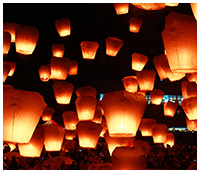
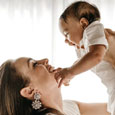 Mother's Day
Mother's Day Passover
Passover Good Morning
Good Morning